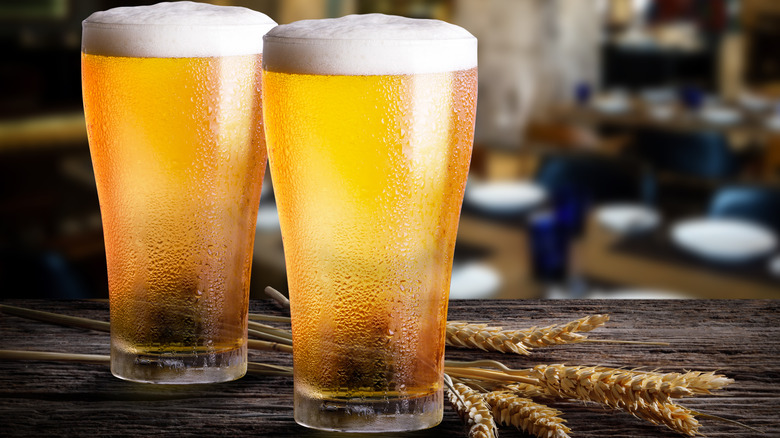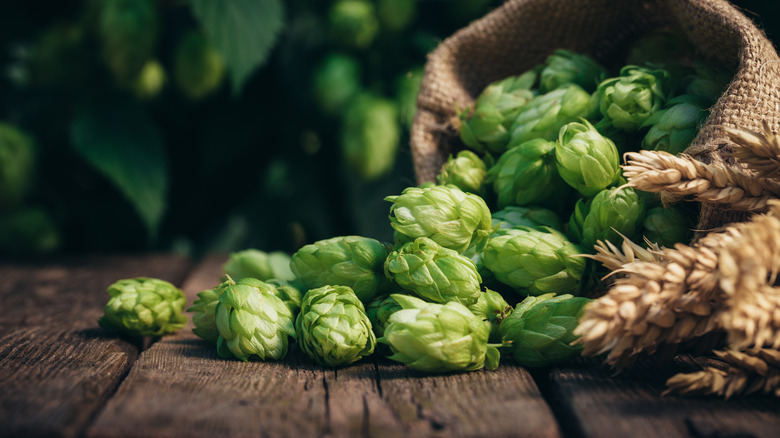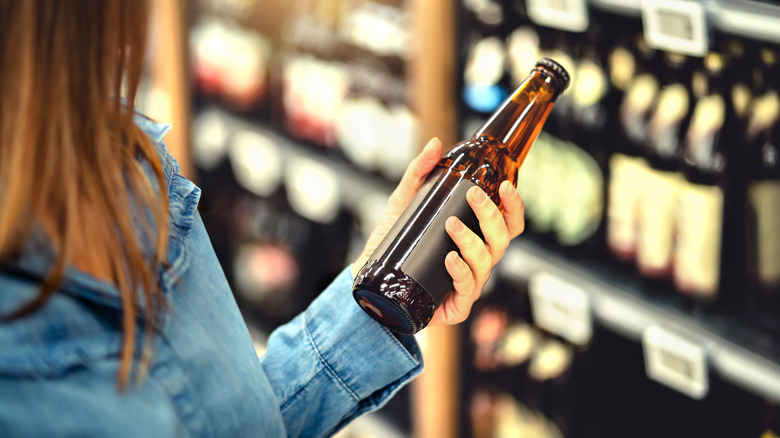The Reason Why IPAs Are So Bitter
If you're a beer drinker, you may have noticed the many additions and alternatives to the beverage that have become available over the years. Of course, you can still choose from classics like Budweiser, Miller, or Coors, but beer options have expanded so much over the years that you may be tempted to try a craft beer, cider, or flavored IPA. To put the U.S. beer expansion in perspective, the National Beer Wholesalers Association reports that in 2021 alone, the "U.S. beer industry shipped [sold] 208.6 million barrels of beer." This, they report, is equal to an astounding 2.9 billion (plus) cases of brewskis.
According to Craft Brewing Business, IPAs, or India Pale Ales, have become one of the fasted growing beers in America. Interestingly, IPAs are notoriously known for their bitter taste, but many IPA lovers would be hard-pressed to explain why they enjoy the "bitter, floral, earthy, citrusy, piney, fruity, and, yes once more, bitter flavor notes," as described by VinePair. They just do. So what exactly is an IPA beer and why is it so bitter?
Hops and the IPA brewing process
American Craft Beer reports that the answer to both questions is hops. Per VinePair, adding more hops — the flower of a female plant called Humulus lupulus, and a member of the hemp family — is what makes an IPA a bitter beer. Generally speaking, hops are a crucial beer ingredient that counteracts the sweetness of malt grain and, according to Men's Journal, have been added to beer since 822 A.D. Today, the big beer brewers use over 100 types of hops and each offers a different flavor that adds to the beers bitterness profile.
The Allagash Brewing Company states that hops are a key component to the bitterness of an IPA, but also notes that there are other components that add to that bitterness like fruits, herbs, and vegetables. And yes, there are different levels of bitterness that an IPA can have. Per The Crafty Cask, if hops are added early in the brewing process, the more bitter the beer will be. The brewing process also determines the IPA's Internationa Bitterness Units (IBUs) — a metric unit that measures a beer's bitterness (via Just Beer).
IBUs and the popularity of the IPA
Just Beer reports that the IBU measurement scale is generally between one and 100, but notes that there can be beers as bitter as up to 1,000 IBUs. The lower the IBU, the less "hoppy" or bitter the IPA will be, and anything over 45 IBUs is considered to be more on the bitter end. Now, Craft Beer Joe explains there is a difference between hoppy and bitter, because all beers are made with hops, yet not all beers are hoppy or bitter in flavor. A hoppy beer actually means that you can taste the flavors of the hops used and has not much to do with the bitterness factor. Again, it's the brewing process and ingredient profile that determines a beer's IBU.
So what makes these bitter IPA beers so popular? CraftBeer.com reports bitterness as the big factor here, stating that an IPA, by and large, "employs an increased amount of hops which can add what is often described as evident, bracing and even aggressive bitterness." Furthermore, Flying Members states that because there are so many varieties of the IPA, unless you are abhorrently against bitter flavor, you can find at least one that can satisfy your tastebuds.


